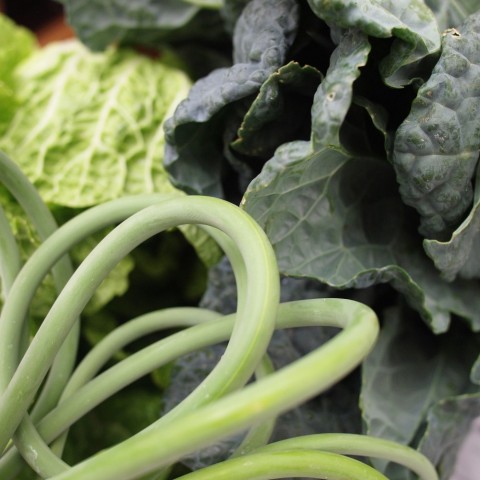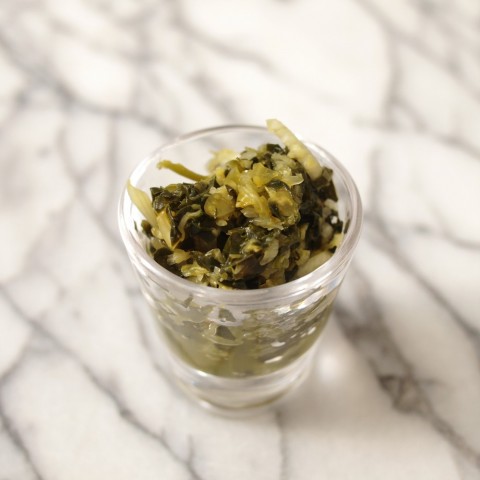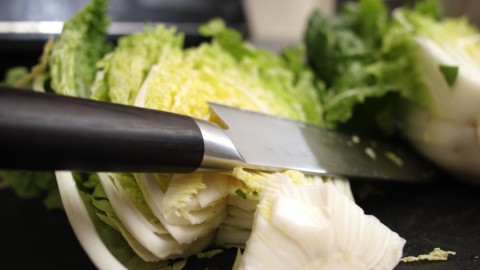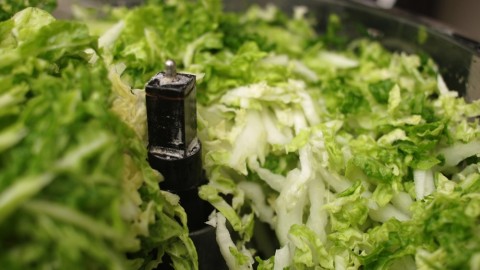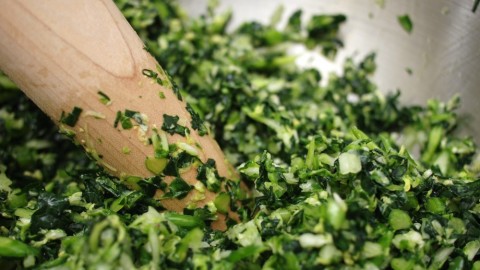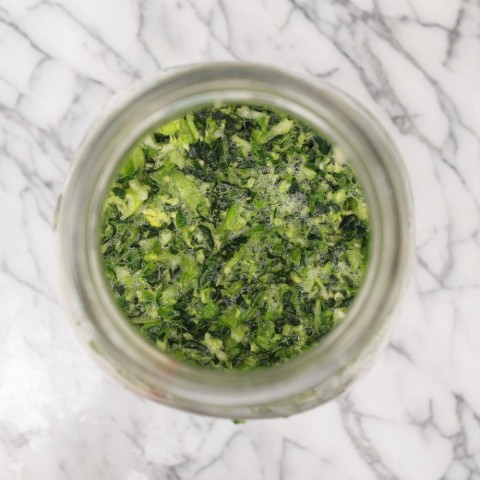Kraut, in the United States, isn’t a very nice word. Dating back to the nineteenth century, the stereotype of the sauerkraut-eating German immigrant was already a thing, and showed up in all the usual places — anecdotes in newspapers, on the minstrel stage, etc. — where one might expect humor at the expense of some racial or ethnic group or another.
During World War I, Kraut became a metonym for German, German became synonymous with wicked, and it became acceptable to use the term as a sneer or a snub, as a way of stirring up enmity and making school-children whose parents derived from Deutschland feel lousy about themselves and about their national heritage.
This was the era of “liberty cabbage.” And it was an era that continued for more than thirty years, through World War II, through propaganda posters, newsreels, and cartoon shorts that informed Americans not just that Germany was the enemy, but that its people were nefarious, contemptible, and all the same, every one of them.
Kraut isn’t a very nice word at all, when it’s detached from its sauer prefix. But I do use it here, and this is why:
Undoubtedly, the recipe that I’m giving you this week is for a sauerkraut, plain and simple. The word Kraut in German means herb, the leafy part of a plant, and also cabbage. And everything in this recipe constitutes one of those three things. The word sauer means, well, sour. And these greens are definitely that.
But sauerkraut also has a very specific connotation. Though there is a lot of regional variation in this particular fermented condiment across Central Europe, in the United States, sauerkraut is just cabbage proper. Its only added flavoring is salt. And nine out of ten times, it’s that yellow stuff that one occasionally piles on a hotdog at a ballgame, or nibbles at during the local pub’s Oktoberfest celebration.
This recipe is not fluorescent yellow, nor is it traditional (as far as I know) in any part of Central Europe. This recipe is sauerkraut, in other words, but it’s not that sauerkraut. And so for the sake of clarity, I’m calling it mixed kraut instead.
But a rose by any other name, and all that. Am I right? (I’m right.)
Like every other sauerkraut out there, this one is a lactofermented pickle, which means that it derives its acidic kick from bacteria that blanket almost every surface on the planet, that gobble up sugars and squirt out lactic acid as waste. Like every other sauerkraut, the point of this one is to preserve leafy vegetables — to control their decomposition such that they remain viable for a really long time, and such that they gain, rather than lose, nutritional value. And most importantly, like every other sauerkraut, this one is delicious and takes all of fifteen minutes to throw together.
My only caveat about this mixed kraut is that I’d highly recommend using all organic vegetables. You probably could go conventional if you wanted. But I don’t like the idea of bottling up the concentrated remains of pesticides with my fermentations, and I wouldn’t encourage you to do it either.
That’s hardly a caveat at all, though. And considering how delicious this particular ferment is, you really shouldn’t let it stop you.
1 Head of Napa Cabbage (about 700 grams)
1 Bunch of Dinosaur Kale
1 Bunch of Garlic Scapes (or, if you don’t have them, two cloves of garlic)
4 tsp Sea Salt
1.5 tsp Caraway Seeds
Either with the slicing disk of a food processor (I’m lazy, I know it), or by hand, shred the cabbage, kale, and garlic scapes, and remove them all to a medium-sized bowl. Sprinkle all over with the salt and the caraway seeds. Mix well. And then with a potato masher, the blunt end of a French rolling pin (my favorite method), or just with your hands, bruise the vegetables thoroughly, pressing them until they give up their liquid.
Once your kraut is bruised, pack it tightly into a clean half-gallon jar, pour the remaining liquid in bowl over it, and press it down until the greens are just about submerged. The liquid probably won’t quite come up over the level of the kraut, but it should be close.
Then cover the jar loosely (to let any gas escape), and store it in a dark place for about five days, until it develops a potent, but not overwhelming, sour flavor.
As your kraut ferments, you’ll want to stir it and push it down into its liquid every day to prevent mold. You’ll also probably want to taste it. In my environment, five days is about the right amount of time, but your results will vary.
When it’s sour enough for you, refrigerate the kraut to slow its fermentation, and serve on hot dogs, with pork chops, or as a delightful and refreshing accompaniment to any meal.
Enjoy!
